the HST breaks its own record for the farthest star ever observed
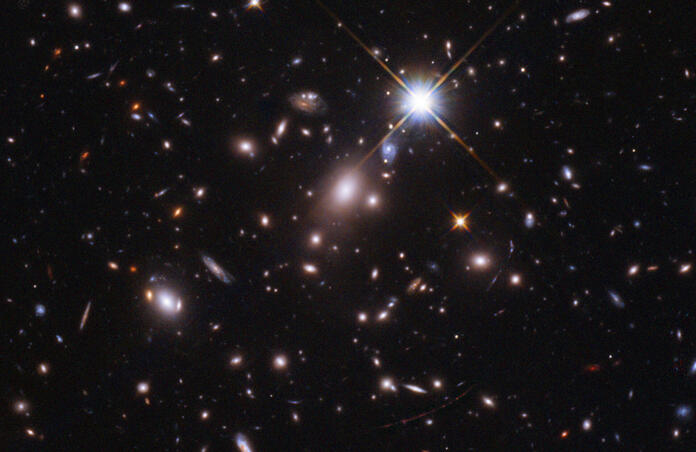
The Hubble Space Telescope (HST) never ceases to amaze !
The HST has spotted what could be the most distant individual star ever observed. Nicknamed Earendel, from the Old English for "morning star", it was found at a redshift of 6.2, corresponding to 900 million years after the Big Bang. The astronomers that discovered it have determined its mass to be somewhere between 50 and 100 times that of the Sun, with a surface temperature of 20 000 K, i.e., a giant young blue star.
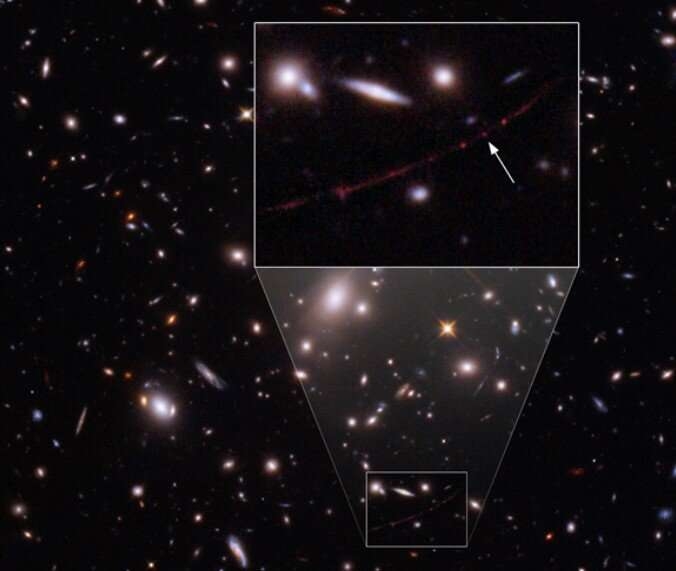
You might be familiar with the expression that looking far is looking into the past – and that’s because the light from objects billions of light-years away has taken billions of years to reach us. For objects as distant as Earendel, it might seem unusual at first that it would take longer for light to travel the estimated distance (28 billion light-years) than the age of the Universe itself (13.8 billion years), but something additional has to be factored in, namely the expansion of the Universe. Earendel emitted the light when the Universe was just under one billion years old, and scientists calculated that at the time, it was “only” 4 billion light-years away from our Milky Way. However, since then, space-time itself has been stretched, so that over the past 13 billion years the star has been “pushed away” from us all the way to its current distance.
On to the detection itself, what enabled the HST to capture it is the phenomenon of gravitational lensing, predicted in Einstein’s theory of General Relativity. In the case of Earendel, it is the galaxy cluster WHL0137-08 that is aligned in such a way that the star’s light gets bended in a way that it appears magnified to us. Exceptionally, Earendel’s apparent brightness has remained constant over the 3.5 years of the study.
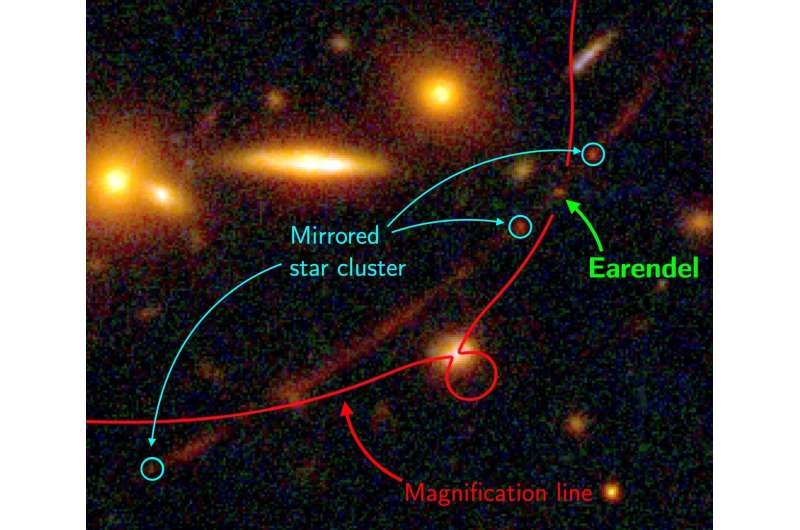
This is because more often than not, the stars are closer, at redshifts between 1 and 1.5, and are observed via microlensing. In this case, the multiple images produced through gravitational lensing are so close together that they appear as a single object of increased apparent brightness. As the lens moves across the Earth–source line of sight, the brightening changes over the course of a few weeks or months. For Earendel, we have an instance of strong gravitational lensing, with a lens of high mass that produces multiple image arcs – note that this is fairly common to catch sight of distant galaxies but much rarer for an individual star. On top of that, Earendel appears almost directly on what’s called a caustic, which can be thought of as a ripple in the fabric of space. This provides maximum magnification (at least a thousand times here), which is why Earendel specifically, rather than its whole galaxy, is enhanced.
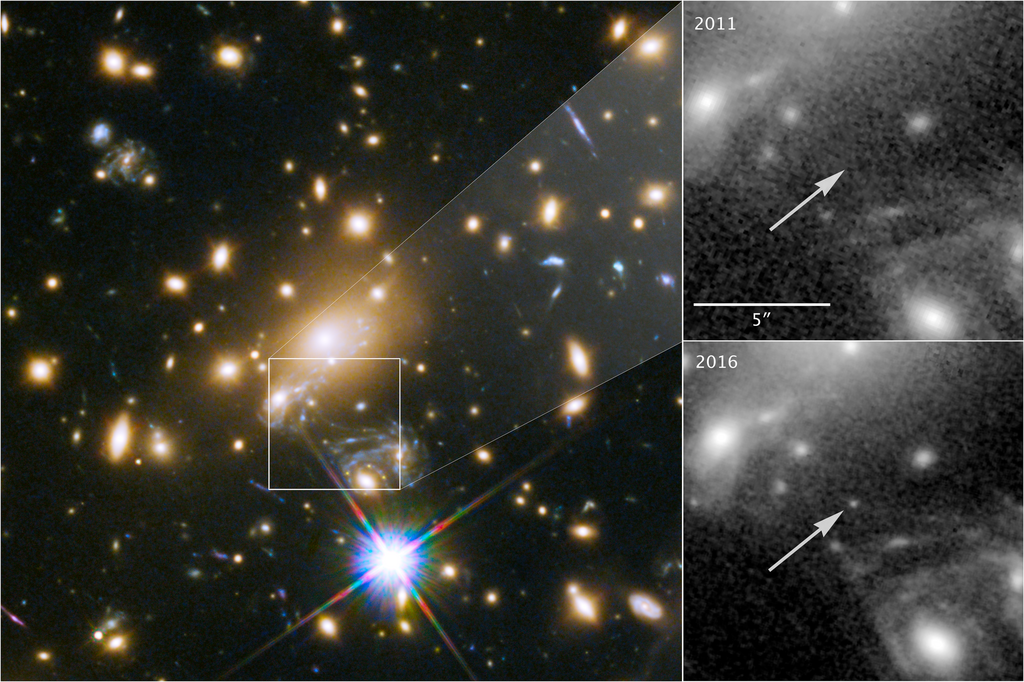
Icarus 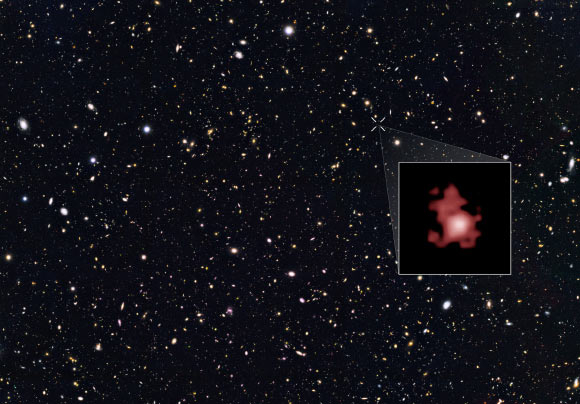
GN-z11 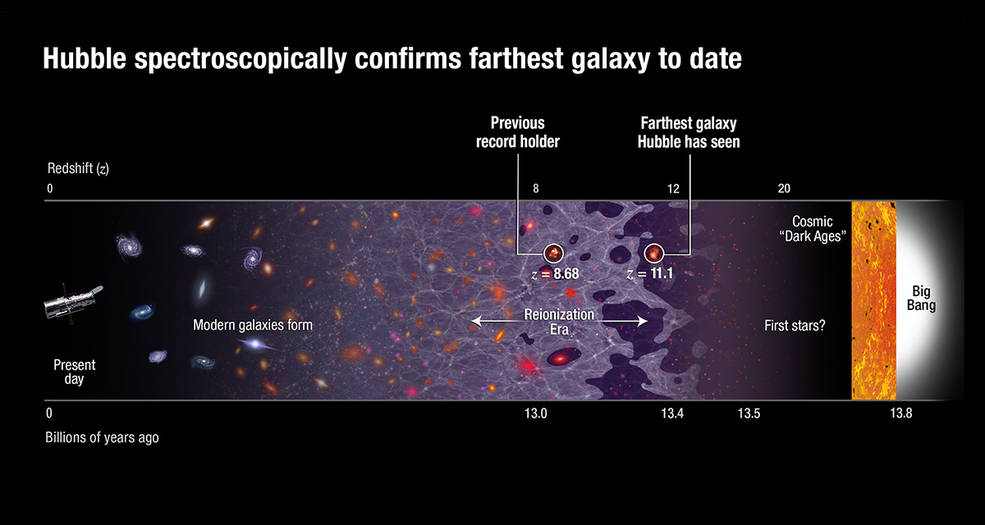
A timeline of the Universe and most distant galaxy ever observed
Up until now, the farthest star that had been observed was Icarus, some 9 billion light-years away from us, also via strong gravitational lensing. In 2016, it’s again the HST that had already detected what remains to this day the farthest galaxy we’ve ever observed, GN-z11, at a redshift of 11.1.
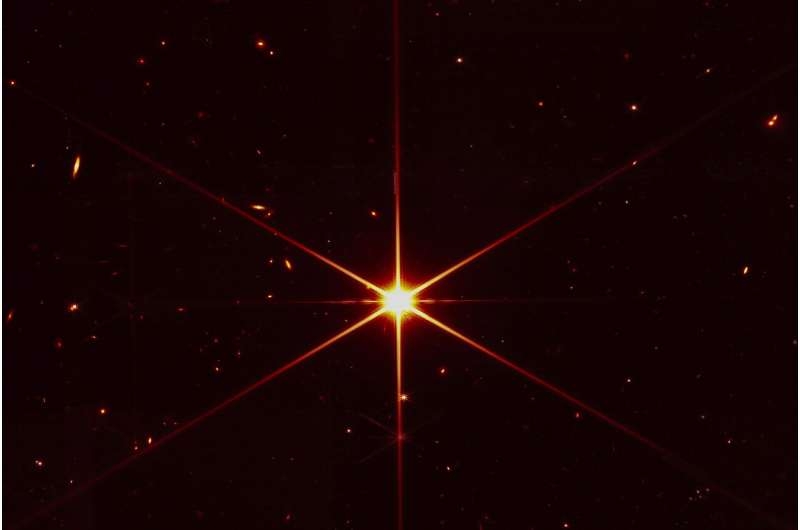
Astronomers eagerly await the JWST’s first science images, in the hope to detect even more distant objects. The team that found Earendel has also been awarded time to observe this distant star to confirm whether it’s a single or binary star and what its composition is, key information to understand the earliest generations of stars. Until then and even beyond, the HST probably still has more surprises up its sleeve…
Cover Image: Hubble full view, NASA/ESA, B. Welch (JHU)/D. Coe (STScI), A. Pagan (STScI)
Image Credits:
1 - Annotated view, NASA/ESA, B. Welch (JHU)/D. Coe (STScI), A. Pagan (STScI)
2 - Close-up, NASA/ESA/B. Welch (JHU)/D. Coe (STScI)/P. Laursen (DAWN)
3 - Icarus, NASA/ESA/P. Kelly (University of Minnesota)
4 - GN-z11, NASA/ESA/P. Oesch (Yale University)/G. Brammer (STScI)/P. van Dokkum (Yale University)/G. Illingworth (University of California, Santa Cruz)
5 - Farthest galaxy, NASA/ESA/P. Oesch and B. Robertson (University of California, Santa Cruz)/A. Feild (STScI)
6 - 2MASS J17554042+6551277 by JWST, NASA/STScI
